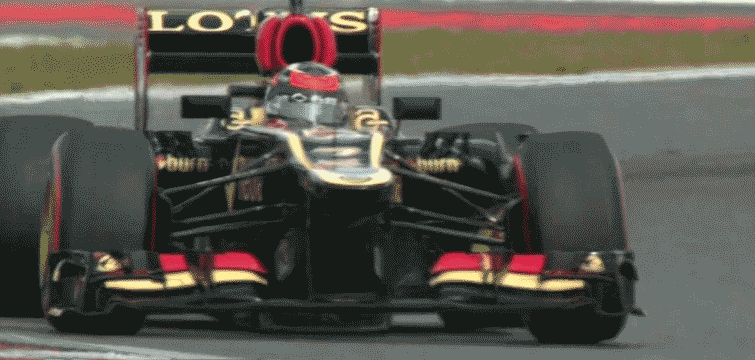chuckdanny wrote:That's ridiculous, i don't know what the fia flap test were but it pushes mercedes to effectively put a slotgap separator between 1st and 2nd flap while they stall the wing by closing 1st flap/3rd element gap.
[...]
The strakes might help the wing to recover from a 3rd element stalled state maybe also. And determining the stalled area more precisely.
I don't think teams are necessarily stalling the wings as much as they're just reducing induced drag along straights. It's kinda hard to get away with much more than that these days.
That said, I think you're absolutely correct about the stabilizing nature of the strakes. Even without a stall, flow patterns will change on a wing that has a dynamic AoA.
chuckdanny wrote:What do you think of the idea that the v-section might control the positioning of the turning winglets vortices?
I still don't see the "v-section" as being anything more than the boundary between the wing and the end plate.
To create a strong vortex, you've got to turn the flow so it will accelerate. In an ideal world, you'd rely solely on the cumulative camber of all wing elements to provide that turn, because it would maximize effective wingspan, i.e. create higher peak downforce.

The problem is the adverse pressure gradient that exists between the trailing edge of the wing and the area in front of the spinning wheels. It pushes the suction peak/separation point forward, and thus down, which greatly reduces the efficiency of the wing. The solution then is to keep the flow low and turn it outward instead. This allows more consistency, but it comes at the expense of a reduced effective wingspan, i.e. creates lower peak downforce.

As I said at one point to Turbo, Ferrari was criticized for having a "simple" wing on the F138. In reality, that wing was aggressive as hell, because it aimed for the ideal.
In any case, I think the Mercedes wing is a further optimization of the compromise solution. When the wheels are steered straight ahead, they form downstream blockages that hugely reduce the efficiency of the wing. Upon further reflection, though, the "paradoxical" inwash flow in this situation actually makes sense, because even though the wing isn't doing much in this configuration, it's still doing
something, and it seems logical for air flow to be pulled inward as a result. (J_a_f figured that out, too.)
When steering angle changes, the outer wheel moves such that it unblocks the outer-most portion of the end plate, and vortical flow will follow the outward path (blue). The inner wheel moves such that it unblocks the inner-most portion of the end plate, and vortical flow will follow the the wing's camber (green). The update specifically enhances this effect. Or so my logic goes.

That's the reason for the angled trailing edge on the vertical end plate. It accommodates the various separation points for the end plate vortex as it shifts with steering angle changes. Or, again, so my logic goes.

(I feel like I'm getting better with that spiel every time I repeat it.)
Now I'm gonna mess with some noodles...
I think every explanation I've read for blown axles/hubs is
wrong.
How does the system work ? The oversized brake duct captures the airflow and splits it into two streams. Part of the air helps cool the carbon disk, while the remainder feeds a channel running through the spinning axle and exits out of the centre of the hollow wheel-nut. As a consequence, the stream creates a low-pressure zone which pushes the wake coming off the twisted front-wing endplates further outward. This in turn reduces drag and channels the airflow towards the sidepods and crucially, towards the diffuser. Last year’s technical regulations led to narrower front wings, which meant the airflow started to decrease in intensity. This is why, in order to make up for lost ground and have the endplates less curved, aerodynamicists re-introduced the open front wheel hub design.
What makes more sense? Increasing the size of the wheels' wake, which increases the size of the downstream blockage the end plates must overcome
and increases overall form drag, all with the hope of affecting an interaction that's ~3m away?

Or does it make more sense to use the pumping action of the spinning wheels to mitigate the interference caused by the wake and literally pull air flow from the wing and then push it outboard so it doesn't adversely affect the sealing vortices aimed at the front of the floor?

You be the judge.
(Actually, I shouldn't say "every explanation I've read," because that implies I read a lot of them, and I don't since they're most often wrong. So, it's entirely possible someone has already identified this.)
EDIT:
turbof1 wrote:EDIT: Perhaps... . Most likely. As you said to stop the elements from closing the slots. The second and thirth elements are connected by these 3 underbody strakes. The upper flaps however are connected to the mainplane elements by the flap adjuster structure. It might suggest a different flexing is going on there.
If they were just the leading edges of the strakes mounted to the main plane underneath, then you'd try to avoid having them interfere with the underside of the flap elements since the underside of an airfoil is where the magic happens.

For the exact same reason, if they were just slot-gap separators or any other sort of structural support, they'd most likely look like this:





















